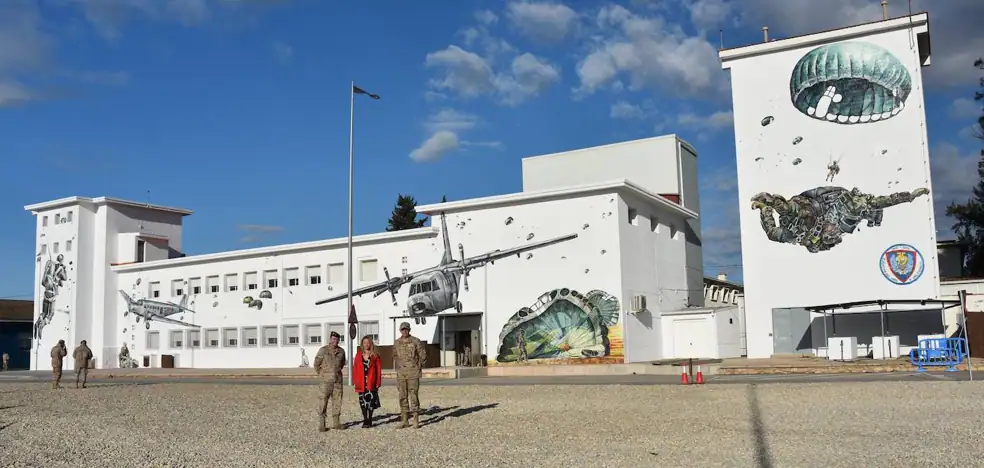Cervantes presents GEOLEXI, the tool to discover a thousand synonyms used in Spanish-speaking countries
“Tomorrow the president’s big cock will come.” The expression has nothing to do with “wet my white sheets” that the great Pau Donés sang. To a Chilean, “running” equals “playing” and the president’s “cock” is like the Gordo in the national lottery. In other words, El Gordo will be played tomorrow. However, for a Peruvian the “big cock of the president” is the most important horse race.
How to know what words mean in some Spanish-speaking countries, such as ‘abismarse’ (surprised), ‘mufa’ or ‘foso’ (equivalent to ‘gafe’ or ‘ash’), to be angry (bewitched, rotten or stubborn) or to be extreme (in Mexico, to have a large musculature)? Why are there students in Spain who are “over the moon or in Babia” in other Spanish-speaking countries “thinking about the immortality of the crab” in math class.
To find out, the Cervantes Institute and the National Distance Education University (UNED) created GEOLEXI, a virtual synonym search tool in Spanish, which, starting Tuesday, will help identify and compare the different meanings of words or expressions.
Cervantes headquarters has hosted the presentation of this new digital platform of geosynonyms, now available for free consultation on computers and mobile devices. It provides flexible and accessible information on over a thousand lexical units (words or expressions), with many more coming soon.
The user can search for a word or phrase by three different criteria: lexical (meaning), geographical (countries or areas that use them), or alphabetically. Each of them gives its definition and is accompanied by pictures or videos that contextualize the word, as well as information about its semantic networks.
There are many terms that change between some areas and others. The ‘socket’ in Spain is the ‘socket’ in others. The ‘mask’ we’ve barely removed from our faces after Covid-19 has been called a ‘chinstrap’ across the Atlantic; the ‘nose’ has the geosynonym ‘ñata’; the ‘glasses’ is the ‘glasses’; the ‘dishcloth’ is the ‘flannel’; the ‘stomach’ is the ‘belly’ or the ‘cotton wool’, and ‘standing’ is synonymous with ‘standing’ in some countries.
The words and expressions are divided into three categories: Pan-Hispanisms (used in all or almost all of the Spanish world), Americanisms (in Latin America only, but not in Spain), and Hispanicisms (used only in Spain; these represent less than 5% of the total).
Luis García Montero, director of Cervantes, explained that the tool is especially useful for those working on the teaching and certification of Spanish as a foreign language: teachers, evaluators and authors of teaching materials, to help them understand language variations. But also for all people who are interested in the language and who want to know how it is used in different countries.
For his part, Ricardo Mairal Usón, Rector of the UNED, said that this innovative lexical tool, of great use and pedagogical value, also has “extraordinary potential because it anticipates possible future developments related to artificial intelligence”.
Subsequently, Carmen Pastor Villalba, Academic Director of the Cervantes Institute, held a discussion with three professors from the UNED responsible for the project: María Antonieta Andión and Cecilia Criado de Diego (Academic functions of content development), and Víctor Fresno Fernández (Coordinator Technical ).
Together they dissect the contents of the virtual platform, which can accommodate the Spaniards of all Spanish-speaking countries, not just those with the greatest demographic power.
The authors “out of caution” excluded words that could be offensive to people, communities or countries for various reasons (for example, criminal language is excluded). Also, in some countries they have not included taboo words (such as “coger” in Argentina, synonymous with having sexual relations), although Cuban María Antonieta Andión thinks they should be included in the future. For Carmen Pastor, students do not learn them in the classroom, but in the cafeteria.
The teachers encouraged the speakers to “own new words,” as happened with the well-known word “cool” due to the rise of soap operas a few decades ago.
The lexicon that GEOLEXI has introduced is based on the Specific Notions of the Curriculum Plan of the Cervantes Institute, published in 2006, and thanks to the collaboration with the Faculty of Philology and the Department of Languages and Computer Systems of the UNED.
García Montero confirmed that the Institute “is committed to Hispanism, to understanding Spanish as a language with a pluricentric standard” belonging to the more than 500 million speakers, spread over twenty countries, “who use it by impressing to make use of the diversity of their environments, from a unity that allows us to understand each other without difficulty».
Source: La Verdad
I’m Wayne Wickman, a professional journalist and author for Today Times Live. My specialty is covering global news and current events, offering readers a unique perspective on the world’s most pressing issues. I’m passionate about storytelling and helping people stay informed on the goings-on of our planet.



